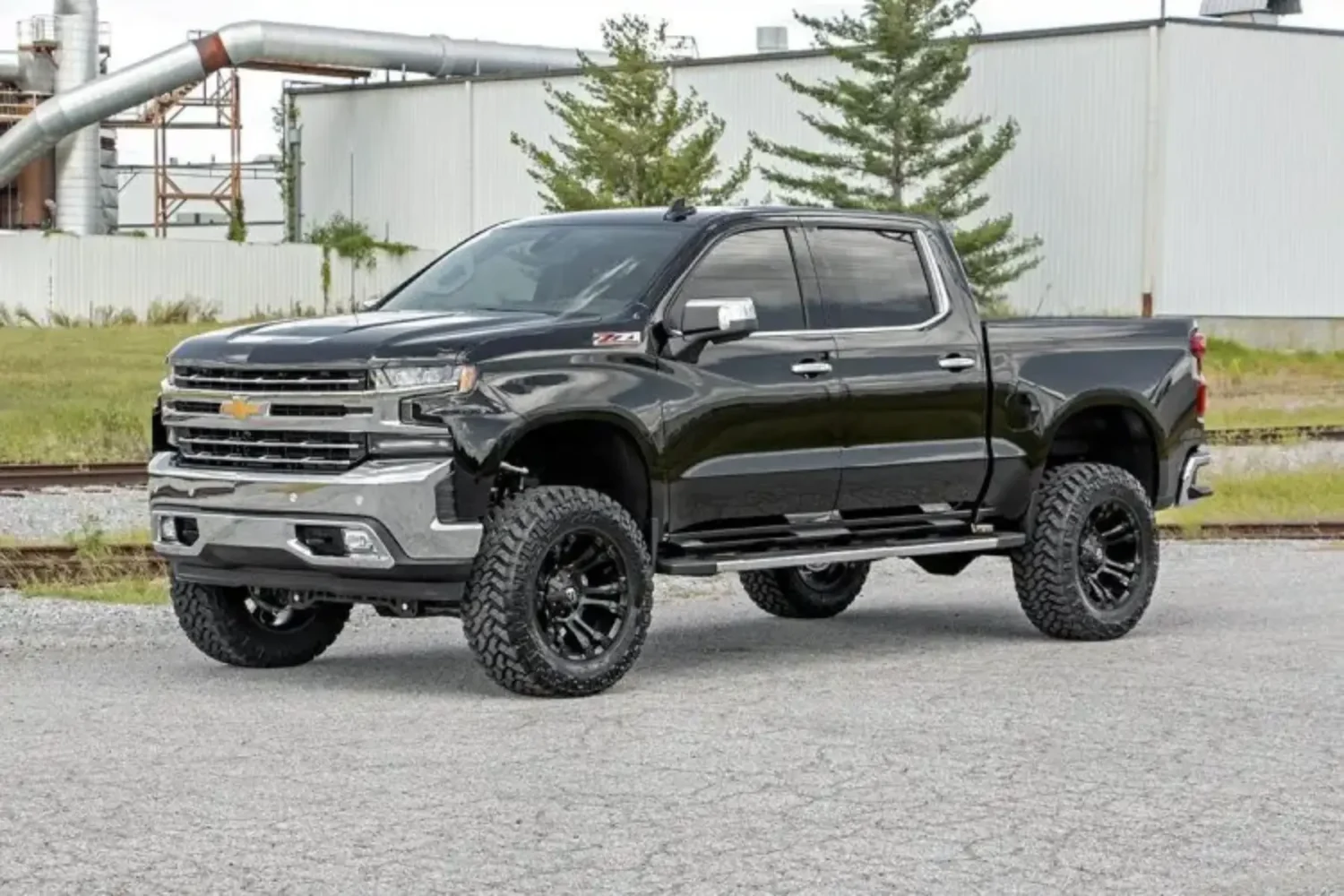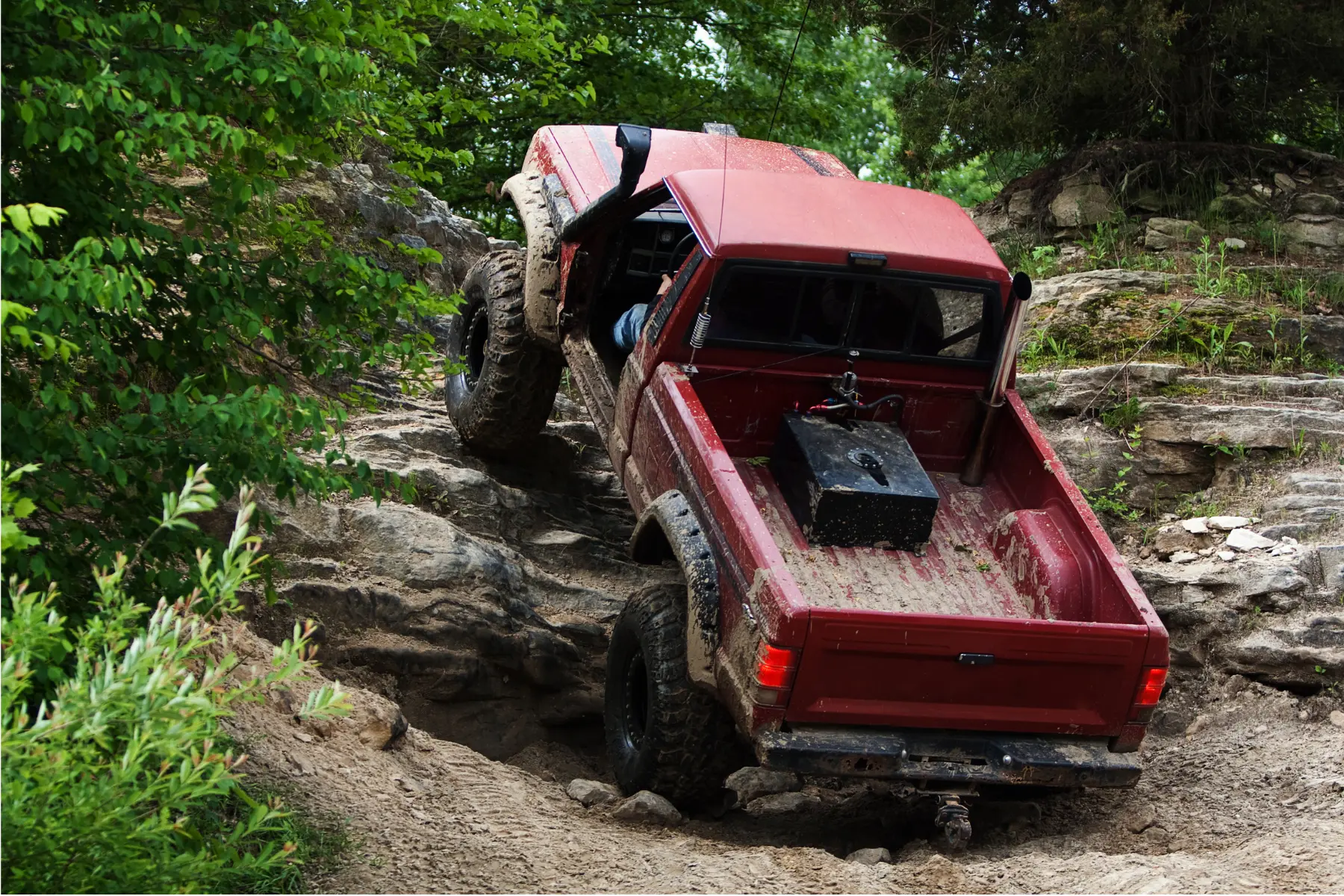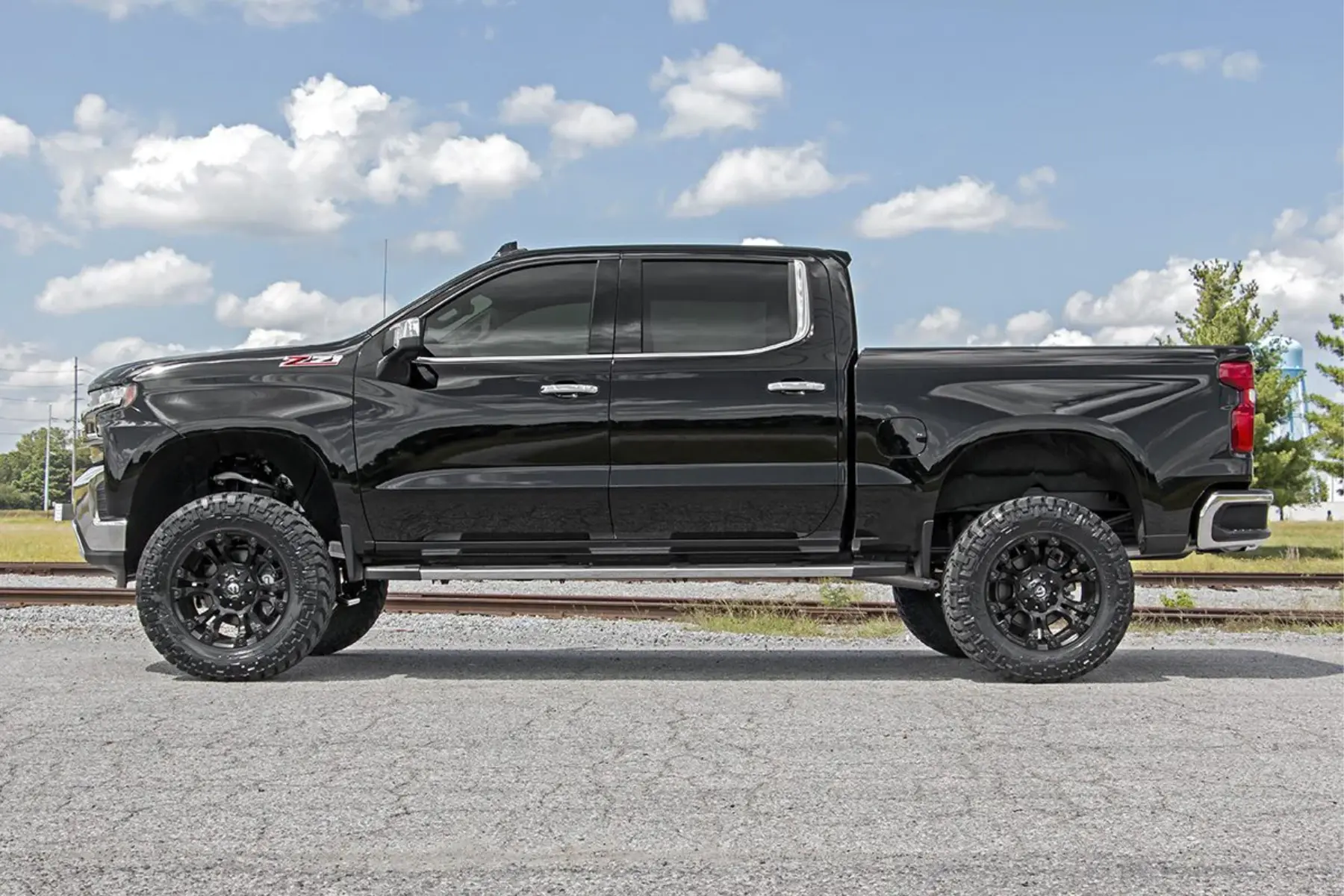The suspension system plays a critical role in how a truck handles, rides, and supports weight. Over time, wear and tear on suspension components can lead to performance issues, safety concerns, and expensive repairs. Prioritizing regular truck suspension maintenance helps prevent these problems and keeps your vehicle running smoothly. When your suspension is in good shape, it absorbs road impacts more effectively, reduces driver fatigue, and improves overall stability. Ignoring small problems early on can lead to bigger ones down the road, so it’s important to stay proactive.
A truck’s suspension system is made up of many working parts, each designed to absorb shock, control motion, and maintain balance. These include springs, shocks, control arms, bushings, and linkages that all work together to keep your truck steady and responsive. Understanding how to maintain truck suspension starts with knowing what each component does and how it contributes to ride quality.
Understanding Suspension Systems in Trucks
Key Parts of a Truck Suspension System
Understanding the different components that make up your truck’s suspension is essential for proper maintenance. Each part is built to handle specific tasks that contribute to stability, comfort, and safety on the road. Knowing what these components do makes it easier to identify problems early and address them before they worsen. To inspect truck suspension effectively, it’s helpful to become familiar with the system’s key parts and how they function together under varying conditions and loads.
- Coil springs are designed to support the truck’s weight and absorb vertical movement. They compress and expand with each bump, helping to maintain a level ride height and prevent bottoming out. When worn, coil springs may sag or fail to rebound properly, which can affect ride quality and handling.
- Shock absorbers dampen the motion of the springs and reduce bouncing. They convert kinetic energy into heat and prevent the truck from continuing to move after hitting a bump. Leaking or worn shocks can result in excessive body movement, making the vehicle harder to control.
- Leaf springs, often used in rear suspension setups, are engineered for heavy loads and provide consistent support across the rear axle. These are crucial in pickup trucks that frequently tow or carry cargo. Damaged leaf springs can lead to uneven tire wear and reduced hauling capacity.
- Control arms connect the wheels to the frame and allow for up-and-down movement while keeping the wheels aligned. These parts must remain tight and in proper shape to maintain stable steering and consistent suspension geometry.
- Sway bars reduce body roll during cornering by linking opposite wheels and distributing force evenly. If the bushings or links become loose, the vehicle may lean excessively in turns, reducing safety and comfort on the road.
Each of these components plays a unique role in how your truck handles daily stress and road vibrations. Staying informed about their function allows you to detect wear early and take appropriate action to keep your suspension in top shape. With regular checks and attention to detail, you’ll be able to inspect truck suspension confidently and extend the lifespan of critical parts.

How Suspension Supports Load and Stability
When a truck is carrying cargo or towing heavy equipment, the suspension system helps distribute the weight evenly across all wheels. This balanced load support is what keeps the vehicle from leaning or bottoming out, especially during turns or braking. Suspension components compress and rebound to minimize body roll and absorb bumps, providing both comfort and control. If this system fails, the truck becomes difficult to handle and unsafe to drive. Proper suspension care for trucks ensures that the system performs as intended under different loads, allowing you to maintain full control even during demanding driving conditions.
Differences Between Front and Rear Suspension
The front and rear suspension setups on most trucks are built differently to serve specific functions. The front suspension is responsible for steering and handling, so it includes more components like ball joints and tie rods that affect how the truck responds to input. The rear suspension, especially in pickups, is typically designed to manage weight distribution and support towing. These separate roles mean each end of the truck wears differently and may require unique maintenance strategies. Addressing signs of suspension wear on both ends of the vehicle ensures that balance, safety, and performance are preserved during everyday driving or work-related tasks.
Suspension Types Common in Heavy-Duty Trucks
Heavy-duty trucks often use suspension designs that can withstand greater stress and offer higher durability compared to light-duty vehicles. Air suspension, leaf spring systems, and heavy-duty shocks are commonly found in these setups, each designed to perform well under pressure and provide a smoother ride under load. Choosing the right system depends on how the vehicle is used, whether for hauling, long-distance travel, or off-road work. Knowing which system your truck uses is the first step toward proper maintenance and identifying potential problems. To effectively protect truck suspension, it’s vital to understand how these types behave under different driving conditions and workloads.
Suspension Function in Varying Road Conditions
Truck suspension systems are constantly adapting to the terrain, whether you’re driving on smooth highways, gravel roads, or rough construction sites. Good suspension allows your vehicle to absorb vibrations and reduce shock transmission to the frame and cabin. Inconsistent or worn parts will struggle to handle potholes, speed bumps, or off-road trails, making the ride rougher and the truck less controllable. Consistent wear and tear is expected, but neglecting necessary service shortens component life. For drivers looking to extend a truck suspension’s life, it’s important to adjust driving habits and follow routine care, especially when frequently navigating uneven or challenging roads.
Visual Inspection for Suspension Health
Checking Springs, Shocks, and Control Arms
Performing a thorough inspection of your truck’s springs, shocks, and control arms helps reveal early warning signs of wear that could affect ride quality and safety. Springs should maintain their shape and position, without sagging or shifting. If you notice uneven spacing between the body and tires, it could indicate weakening or broken coils. Shocks must be checked for leaks, dents, or surface damage. A damaged shock absorber may not be visible during normal driving but can lead to instability when turning or braking. Control arms should be closely examined for cracks, bends, or play in the joints, as these can alter steering response and alignment. Excess movement or irregular gaps near bushings often signals wear. Taking time to regularly assess these critical parts as part of your truck suspension checkup can help you avoid major repairs later. A detailed inspection routine ensures your truck continues to handle safely and predictably under any condition.
Signs of Corrosion, Cracking, or Rust
Corrosion and rust are common issues that threaten the durability of your suspension system, especially in regions with moisture, road salt, or frequent exposure to dirt. When rust begins to eat into metal components, it can weaken their structural integrity and lead to failure under load. Cracks around mounting points or welded seams are also cause for concern. These signs can develop gradually and may go unnoticed without close inspection. Identifying them early helps preserve performance and avoid dangerous breakdowns. If any deterioration is present, it’s a strong indicator that truck suspension maintenance is overdue and should be addressed immediately.
Spotting Uneven Wear and Physical Damage
Uneven wear on tires or visible marks on suspension components can indicate deeper issues within the system. Problems like misalignment, bent parts, or worn bushings often show up through irregular tire patterns or scratches and dents on components. When these signs appear, it’s important to investigate the cause before the damage spreads. Ignoring them can result in poor handling and increased stress on other suspension parts. Paying attention to signs of a bad truck suspension gives you a clear warning that servicing is necessary to prevent further complications.
Using Light and Tools for a Thorough Inspection
A detailed suspension inspection requires more than just a quick glance. Proper visibility and the right tools make it easier to identify problems early and address them before they worsen. Many suspension issues are subtle and won’t show obvious symptoms right away. That’s why using the right equipment ensures nothing gets missed. To confidently protect truck suspension, drivers must use a hands-on approach and check every component with clarity and precision.
- Bright lighting helps expose cracks, wear marks, and surface rust on parts that might otherwise be hidden in shadowed areas beneath the truck.
- Inspection mirrors allow you to see behind or underneath components without removing them, especially in tight or obstructed areas.
- Pry bars help you test for excess play or movement in bushings, joints, and control arms to identify worn parts before they break.
- Torque wrenches ensure that all bolts are tightened to spec, helping prevent loosening or imbalance caused by improper torque settings.
- Socket sets and hand tools give you the ability to remove, adjust, or replace parts as needed during an inspection, making each checkup more thorough and effective.
Combining these tools with careful attention to detail ensures your inspection is complete and productive. With the right equipment and methodical approach, it becomes easier to maintain the health of your suspension and protect truck suspension performance for the long haul.
How Often You Should Perform a Visual Checkup
Routine visual inspections help catch problems early and reduce the risk of larger suspension failures. It’s a good idea to look over your system at least once every few months, or more often if the truck is used for off-road driving or heavy hauling. Seasonal weather changes can also affect component wear, so checking before and after winter is wise. Making these checks part of your regular truck suspension tips ensures your vehicle stays in optimal condition year-round without unexpected performance issues.

Identifying Common Suspension Issues in Trucks
Sagging Springs and Uneven Ride Height
If your truck appears lower on one side or the front dips more than usual, sagging springs may be the cause. This issue can affect handling, tire wear, and load distribution. In most cases, sagging is a sign of aging or weakened components unable to support the vehicle’s weight evenly. Addressing this early is key to preventing stress on nearby parts. One of the earliest signs of suspension wear is uneven ride height, which often indicates it’s time for a detailed suspension evaluation or repair.
Excessive Bouncing and Rough Handling
When a truck bounces excessively after hitting a bump or feels unstable on uneven roads, there’s usually an issue with the shocks or struts. These components are designed to absorb motion and maintain a smooth ride. When they wear out, the vehicle becomes harder to control, especially when cornering or stopping suddenly. You might also notice a general stiffness or shaking through the steering wheel. These symptoms should never be ignored, as they can lead to a loss of vehicle control. If these problems arise, it’s time to consider a professional truck suspension service to assess and fix the underlying cause.
Unusual Noises When Turning or Driving Over Bumps
Clunking, knocking, or creaking sounds coming from the suspension during turns or over bumps often signal worn bushings, loose mounts, or damaged joints. These sounds may start faint but gradually worsen over time. Noise is typically one of the most noticeable suspension issues in trucks and can indicate a serious problem forming beneath the surface. Since these sounds are linked to movement, they often occur when the suspension is under stress, such as during low-speed maneuvers or while navigating uneven terrain.
Steering Instability or Vehicle Drift
If your truck begins to pull to one side or feels unstable while driving in a straight line, it may be experiencing steering-related suspension problems. This kind of drift is more than just a nuisance—it can signal misaligned suspension geometry or worn steering linkage components that require immediate attention. Inconsistent steering often becomes more noticeable at higher speeds or when braking, making the vehicle feel unpredictable or even unsafe. This could also be caused by a shifted control arm or deteriorated bushings affecting how the suspension handles movement and absorbs load. Drivers often mistake this instability for a tire issue, but if the problem persists after alignment and rotation, the suspension is likely at fault. A comprehensive check can pinpoint whether parts need adjusting or replacing. If left unaddressed, it could reduce braking efficiency and increase tire wear. Recognizing this symptom early is essential to avoid having to replace truck suspension prematurely.
Fluid Leaks Around Shock Absorbers
Shock absorbers play a crucial role in stabilizing your ride, and they rely on internal fluid to function properly. When that fluid begins to leak, the shocks can no longer dampen vibrations effectively. You may notice streaks of oil running down the shock body or accumulating around the mounting points. In more advanced stages, the vehicle may feel unusually bouncy or difficult to control on uneven surfaces. This kind of failure compromises not only ride quality but also safety, especially under load or during sudden stops. A leak is often a sign that the internal seals have failed and the part is no longer working as intended. Keeping an eye out for these leaks is a major part of responsible truck suspension maintenance and should never be ignored.
How to Maintain Truck Suspension Effectively
Lubricating Joints and Bushings Regularly
Keeping suspension joints and bushings properly lubricated plays a major role in preserving smooth movement and reducing friction between connected parts. Without lubrication, rubber and metal components can dry out or seize, leading to accelerated wear and decreased flexibility in your suspension. In high-mileage trucks or vehicles exposed to harsh environments, lubrication is even more essential. Applying grease at the correct intervals helps prevent squeaks, stiffness, and binding under stress. Routine attention to this task is a smart way to improve longevity. Understanding this process is key to anyone learning how to maintain truck suspension for consistent performance.
Maintaining Proper Tire Pressure and Wheel Alignment
Tire pressure and wheel alignment play a direct role in how your suspension functions and how long it lasts. When tires are underinflated or misaligned, they place extra stress on components like control arms, ball joints, and bushings. Over time, this uneven force can lead to premature wear and steering inconsistencies. Proper inflation supports even tire wear, while routine alignments ensure the suspension maintains optimal angles and performance. Small adjustments can make a big difference in long-term reliability. These factors are essential for drivers who want to extend a truck suspension’s life and avoid costly suspension repairs down the road.

Scheduling Preventive Suspension Checkups
Relying solely on visible symptoms to guide suspension care can leave underlying problems undetected. Instead, scheduling regular inspections with a qualified technician adds a professional layer of oversight. These checkups often include alignment tests, part evaluations, and performance assessments under load. A technician can spot wear patterns or internal damage that might not be obvious during a casual check. Preventive service visits also help maintain your warranty coverage and keep the truck performing safely over time. Committing to consistent maintenance through a trusted truck suspension service ensures that your vehicle remains dependable, responsive, and ready for daily use.


